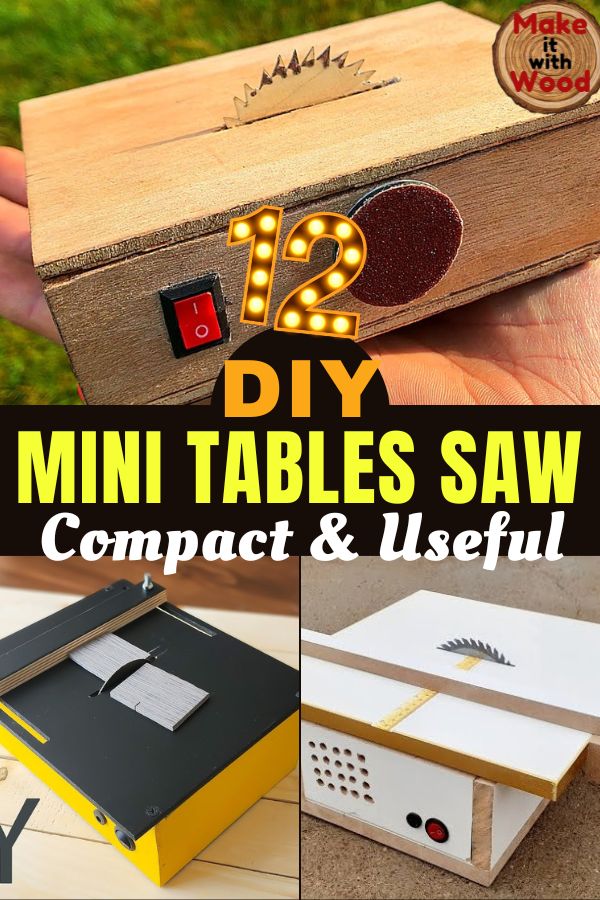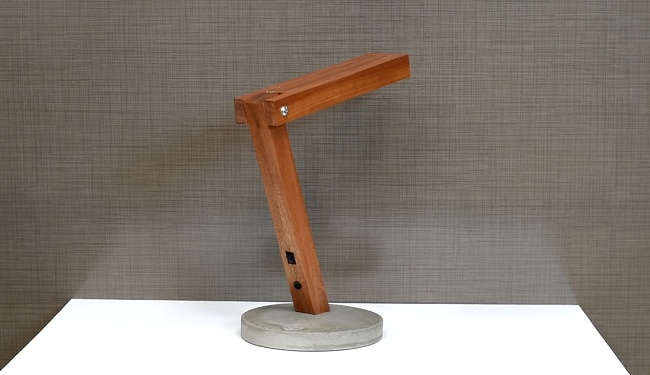Woodworking Ideas for Small Spaces: Maximizing Creativity in Limited Areas

Woodworking Ideas for Small Spaces
I. Introduction
Woodworking is a beloved craft that allows individuals to express their creativity through the creation of beautiful and functional pieces. However, for those who have limited space, pursuing woodworking projects can seem like a daunting task. In this article, we will explore various strategies and ideas to help maximize creativity in small spaces. From efficient space organization to compact workbench ideas, storage solutions, and small-scale woodworking projects, we will provide you with practical tips and inspiration to make the most of your limited woodworking area.
II. Planning and Organization
A. Assessing Available Dimensions and Identifying Constraints
Before embarking on any woodworking project, it is crucial to assess the dimensions of your small space and identify any constraints that may impact the layout and functionality of your workspace. Take precise measurements of the available area, including height, width, and depth. This will give you a clear understanding of the limitations you need to work with, allowing you to plan accordingly.
B. Potential Storage Solutions
When space is limited, efficient storage becomes paramount. Consider creative storage solutions such as vertical shelving systems, wall-mounted cabinets, and drawers to maximize your available space. Look for opportunities to utilize hidden storage spaces, such as under-bench cabinets or secret compartments within wall panels. By strategically planning your storage options, you can keep your tools and materials organized and easily accessible, even in a small workshop.
III. Compact Workbench Ideas
A. Folding Workbench Designs
1. Utilizing Wall-Mount Foldable Workbenches
Wall-mount foldable workbenches are a perfect solution for small spaces. These benches can be easily folded up and secured against the wall when not in use, freeing up valuable floor space. When needed, they can be unfolded and provide a sturdy and functional work surface for your woodworking projects.
2. Transforming Furniture into a Portable Workbench
If you have limited space for a dedicated workbench, consider repurposing existing furniture into a portable workbench. For example, a sturdy table with storage compartments can be transformed into a versatile woodworking station. By adding a vice or clamps, you can create a dedicated area for woodworking tasks, while also utilizing the storage space for your tools and materials.
3. Building a Space-Saving Bench with Storage Compartments
Another option is to build a space-saving bench with built-in storage compartments. By integrating drawers, shelves, or cabinets into the design, you can efficiently utilize the available space while having all your tools within arm’s reach. This multi-functional approach ensures that your woodworking area remains organized and clutter-free.
B. Mobile Workstations
1. Modular Workstation on Wheels for Increased Mobility
To maximize mobility in a small woodworking space, consider a modular workstation on wheels. These customizable workstations allow you to rearrange and reconfigure your tools and work surfaces based on your project requirements. With the ability to move your entire workstation effortlessly, creativity knows no bounds in a small space.
2. Customizing a Rolling Workbench with Integrated Tool Storage
A rolling workbench with integrated tool storage provides a compact and efficient solution for small woodworking areas. By incorporating drawers, pegboards, and hanging racks for your tools, you can easily access and organize your equipment without sacrificing precious workspace. The mobility aspect allows you to utilize the available space more dynamically.
3. Transforming a Wheeled Cart into a Portable Station
For those with extremely limited space, transforming a wheeled cart into a portable woodworking station can be a game-changer. By attaching a sturdy work surface to the cart and utilizing the cart’s storage capabilities, you can create a compact and flexible workstation. This setup allows you to move your woodworking projects to different areas, maximizing the use of your limited space.
C. Multi-functional Workspaces
1. Utilizing Convertible Furniture for Dual Purposes
In a small woodworking space, it is essential to make the most of every piece of furniture. Consider utilizing convertible furniture that serves dual purposes. For example, a workbench that can double as a desk or a storage cabinet that also acts as a work surface. This way, you can optimize space utilization and seamlessly transition between woodworking and other activities.
2. Creating a Desk and Workbench Hybrid
If your woodworking space needs to function as a home office or study area, consider creating a desk and workbench hybrid. By incorporating a removable work surface on top of a desk, you can easily switch between woodworking projects and other tasks. This versatile setup allows you to maximize productivity and creativity within the confines of a small space.
3. Building a Murphy Style Workbench that Folds into a Wall Unit
A Murphy style workbench offers a clever solution for small spaces. By designing a workbench that folds into a wall unit, you can free up valuable floor space when not in use. When folded down, the workbench provides a sturdy and functional surface for your woodworking projects. This compact and efficient design ensures that your workspace adapts seamlessly to your needs.
IV. Storage for Small Spaces
A. Vertical Storage Ideas
1. Utilizing Pegboards and Tool Racks
Pegboards and tool racks are excellent options for vertical storage in small woodworking spaces. Install a pegboard on a blank wall and hang your frequently used tools and accessories for easy access. Tool racks can be mounted on the wall or inside cabinets to keep your tools well-organized and visible.
2. Installing Wall-Mounted Cabinets and Shelves
When floor space is limited, take advantage of your vertical space by installing wall-mounted cabinets and shelves. These storage solutions provide ample space to store your woodworking materials, accessories, and tools. Opt for cabinets with adjustable shelves to customize the storage compartments according to your specific needs.
3. Incorporating Magnetic Strips for Tool Organization
Magnetic strips offer a unique and space-saving solution for tool organization. Mount them on your workshop walls or the side of your workbench, and you can easily store and access metal tools without taking up valuable drawer or shelf space. Magnetic strips are particularly useful for small hand tools, such as chisels, screwdrivers, and pliers.
B. Utilizing Hidden Storage Spaces
1. Building Under-Bench Cabinets and Drawers
Make the most of the space beneath your workbench by building under-bench cabinets and drawers. These hidden storage compartments provide a discreet and efficient way to keep your tools and materials organized. By utilizing the often-overlooked space under your workbench, you can optimize your storage capacity without sacrificing valuable floor space.
2. Creating Hidden Storage Compartments within Wall Panels
When planning your workshop layout, consider incorporating hidden storage compartments within wall panels. These concealed compartments can be built behind sliding or hinged panels, allowing you to hide away valuable tools or materials while maintaining a clean and organized workspace. These hidden storage spaces also add a touch of intrigue and uniqueness to your workshop.
3. Crafting Secret Compartments in Furniture Pieces
If you enjoy working on woodworking projects outside of your dedicated workshop, consider adding secret compartments to furniture pieces. Whether it’s a coffee table with a hidden drawer or a bookshelf with concealed compartments, these inventive designs not only provide additional storage but also add a sense of mystery and creativity to your woodworking endeavors.
C. Portable Storage Options
1. Utilizing Portable Toolboxes and Tote Bags for Easy Mobility
When working with limited space, portable storage options are a must. Invest in quality toolboxes or tote bags that allow you to carry your essential tools to different locations easily. These portable solutions not only keep your tools organized but also provide the flexibility to work outside of your small woodworking area.
2. Incorporating Rolling Carts with Multiple Storage Layers
Rolling carts with multiple storage layers are an excellent addition to any small woodworking space. These carts can be easily moved around your workshop as needed and provide the flexibility to store various tools and materials. With multiple shelves or compartments, you can keep everything within reach and neatly organized.
3. Building Compact Storage Towers for Efficient Space Utilization
If you have a small corner or wall space available, consider building a compact storage tower. Construct a vertical tower consisting of multiple shelves or cabinets, providing ample storage without occupying a significant footprint. By utilizing the height of your workspace, you can maximize storage capacity while leaving enough room for your woodworking projects.
V. Small-Scale Woodworking Projects
A. Creating Functional Small Furniture
1. Crafting Space-Saving Tables and Desks
In a small space, versatile furniture pieces are highly valuable. Consider crafting space-saving tables or desks that can fold or expand based on your needs. These functional pieces provide a dedicated workspace for your woodworking projects while minimizing the space they occupy when not in use.
2. Building Compact Bookshelves and Storage Units
Utilize your woodworking skills to build compact bookshelves and storage units that fit perfectly in small spaces. By designing custom-sized shelves, you can optimize vertical storage while ensuring the furniture seamlessly integrates into your overall layout. These compact storage solutions are not only practical but also aesthetically pleasing additions to your space.
3. Making Versatile Stools and Seating Solutions
Craft versatile stools and seating solutions that can be easily tucked away when not in use. These space-saving seating options can serve as additional work surfaces or be used for a quick break from your woodworking projects. By combining functionality and practicality, your small woodworking area becomes even more adaptable.
B. Designing Decorative Pieces
1. Crafting Intricate Wooden Wall Art
Let your creativity shine by crafting intricate wooden wall art pieces. Design and carve unique patterns or sculptures that can be displayed on your workshop walls. These decorative pieces not only add a personalized touch to your space but also showcase your woodworking skills.
2. Building Small Planters and Herb Gardens
Bring a touch of nature into your small woodworking area by building small planters and herb gardens. These compact gardening projects can be designed to fit on windowsills, shelves, or hanging racks. Not only will these green additions provide a visually appealing element, but they also create a refreshing and inspiring environment for your woodworking endeavors.
3. Creating Unique Picture Frames and Display Shelves
Enhance the aesthetics of your workspace by crafting unique picture frames and display shelves. These woodworking projects allow you to showcase cherished memories, artwork, or collectibles. By designing custom-sized frames and shelves, you can maximize the available wall space while adding personality to your small woodworking area.
C. Customizing Home Organization Accessories
1. Crafting Holders and Mail Organizers
Simplify your daily life by crafting holders and mail organizers that help keep your workspace tidy. Build sleek and functional organizers for pens, pencils, rulers, or other small tools commonly used in your woodworking projects. Additionally, design mail organizers that can be attached to walls or placed on tabletops, ensuring important documents are within reach and neatly stored.
2. Building Jewelry Organizers and Valets
Take advantage of your woodworking skills to create jewelry organizers and valets. Design compartments and partitions within small boxes or wall-mounted racks to keep your jewelry collection organized and easily accessible. These custom-made organizers not only serve a practical purpose but also add a touch of elegance to your woodworking area.
3. Making Customized Wall Hooks and Hangers
Design and build customized wall hooks and hangers that cater to your specific needs. These small but essential accessories can be crafted from various wood types, allowing you to choose the design and style that best complements your workspace. From tool hooks to coat hangers, these personalized additions add functionality and a touch of craftsmanship to your small woodworking area.
VI. Summary
In this article, we have explored various woodworking ideas and strategies to help maximize creativity in small spaces. From planning and organization to compact workbench ideas, storage solutions, and small-scale woodworking projects, there are numerous possibilities to create a functional and inspiring workspace, regardless of space constraints. By embracing adaptability and efficiency, you can make the most of your limited area and pursue your woodworking passion to the fullest.
See Also
Easy DIY Wood Projects For Small Spaces
Simple DIY mini table saw ideas
VII. Frequently Asked Questions
A. What are some essential tools for woodworking in small spaces?
In small woodworking spaces, it is crucial to prioritize versatile and compact tools. Some essential tools include a handheld circular saw, a compact router, a cordless drill, a small workbench or work surface, various hand tools such as chisels and screwdrivers, and measuring tools like a tape measure and combination square. Additionally, consider investing in quality storage solutions to keep your tools organized and easily accessible.
B. How can I make the most of limited storage space for my woodworking tools?
Maximizing limited storage space requires strategic planning and organization. Utilize vertical storage solutions such as pegboards, tool racks, and wall-mounted cabinets or shelves. Incorporate hidden storage options like under-bench cabinets, drawers, or secret compartments within wall panels. Additionally, consider portable storage options such as toolboxes, tote bags, or rolling carts with multiple storage layers. By making efficient use of available space and implementing smart storage solutions, you can optimize storage capacity in small woodworking areas.
C. Can I engage in woodworking projects without a dedicated workshop?
Absolutely! While a dedicated workshop provides an ideal environment, woodworking projects can be pursued in various settings. Consider utilizing small portable workbenches or transforming existing furniture into functional workstations. Additionally, make use of compact and versatile tools that don’t require excessive space. With proper planning, organization, and adaptable solutions, woodworking projects can be successfully completed even in the absence of a dedicated workshop.



